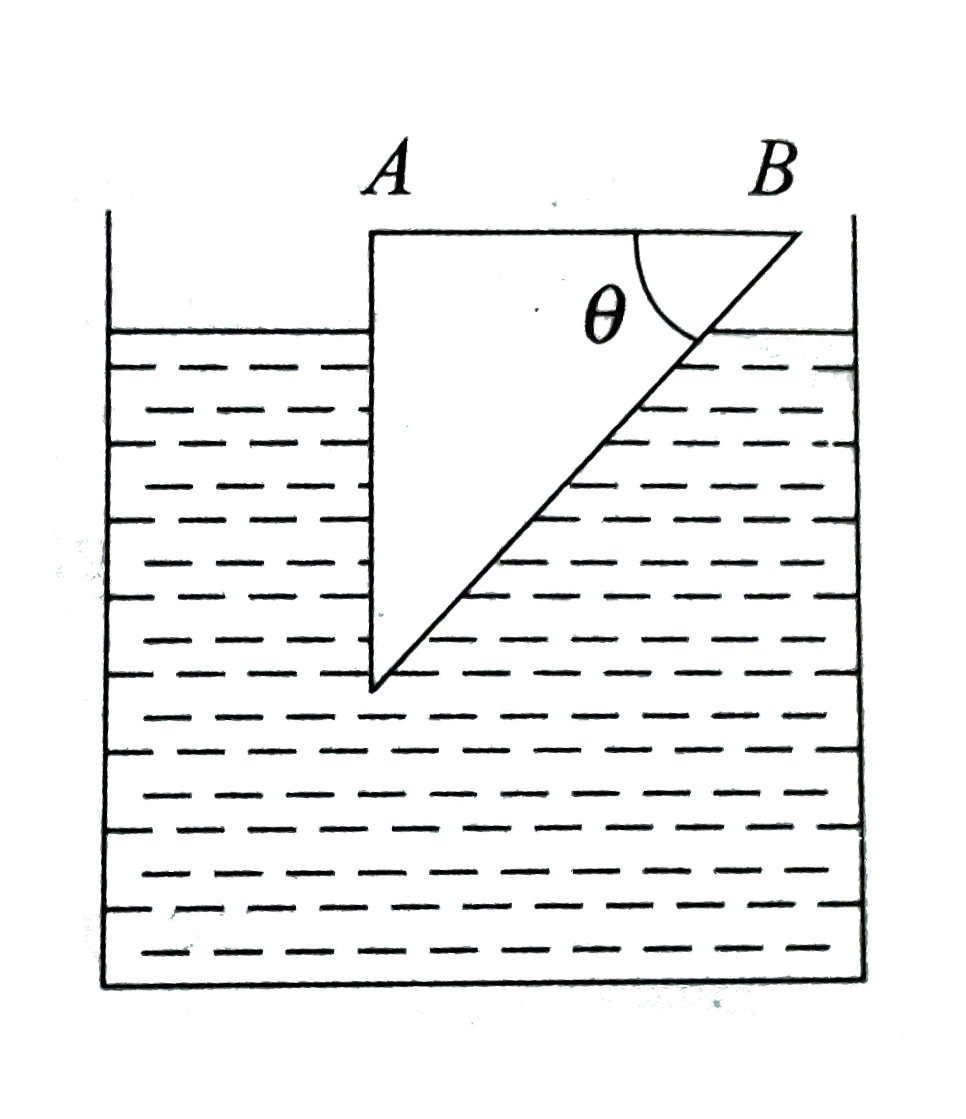A thin film of refractive index 1.5 and thickness 4×10−5 cm is illuminated by light normal to the surface. What wavelength within the visible spectrum will be intensified in the reflected beam?
4800Å
5800Å
6000Å
6800Å
The correct Answer is:a
To solve the problem of finding the wavelength that will be intensified in the reflected beam from a thin film of refractive index 1.5 and thickness 4×10−5 cm, we can follow these steps:
Step 1: Understand the Condition for Bright Fringes
The condition for constructive interference (bright fringes) in thin films is given by the formula:
2nd=(m+12)λ
where:
- n is the refractive index of the film,
- d is the thickness of the film,
- m is the order of the fringe (an integer),
- λ is the wavelength of light in vacuum.
Step 2: Rearrange the Formula
We need to rearrange the formula to solve for λ:
λ=2ndm+12
Step 3: Substitute the Known Values
Given:
- n=1.5
- d=4×10−5 cm = 4×10−7 m (since 1 cm=10−2 m)
Now substituting these values into the equation:
λ=2×1.5×4×10−7m+12
λ=12×10−7m+12
Step 4: Determine the Value of m
To find the wavelength that lies within the visible spectrum (approximately 400 nm to 700 nm), we need to find an integer m such that λ falls within this range.
Step 5: Calculate for Different Values of m
1. For m=2:
λ=12×10−72+12=12×10−72.5=12×10−72.5=4.8×10−7 m=480 nm
2. Check if m=1 or m=3 gives a wavelength in the visible range:
- For m=1:
λ=12×10−71+12=12×10−71.5=8×10−7 m=800 nm(not visible)
- For m=3:
λ=12×10−73+12=12×10−73.5≈3.43×10−7 m=343 nm(not visible)
Step 6: Conclusion
The only value of m that gives a wavelength within the visible spectrum is m=2, which results in:
λ=480 nm
Thus, the wavelength that will be intensified in the reflected beam is 480 nm.
The condition for constructive interference (bright fringes) in thin films is given by the formula:
2nd=(m+12)λ
where:
- n is the refractive index of the film,
- d is the thickness of the film,
- m is the order of the fringe (an integer),
- λ is the wavelength of light in vacuum.
We need to rearrange the formula to solve for λ:
λ=2ndm+12
Given:
- n=1.5
- d=4×10−5 cm = 4×10−7 m (since 1 cm=10−2 m)
λ=2×1.5×4×10−7m+12
λ=12×10−7m+12
To find the wavelength that lies within the visible spectrum (approximately 400 nm to 700 nm), we need to find an integer m such that λ falls within this range.
1. For m=2:
λ=12×10−72+12=12×10−72.5=12×10−72.5=4.8×10−7 m=480 nm
- For m=1:
λ=12×10−71+12=12×10−71.5=8×10−7 m=800 nm(not visible)
- For m=3:
λ=12×10−73+12=12×10−73.5≈3.43×10−7 m=343 nm(not visible)
The only value of m that gives a wavelength within the visible spectrum is m=2, which results in:
λ=480 nm
Topper's Solved these Questions
- WAVE OPTICSBook:CENGAGE PHYSICS ENGLISHChapter:WAVE OPTICSExercise:Multiple Correct
Explore 8 Videos
- WAVE OPTICSBook:CENGAGE PHYSICS ENGLISHChapter:WAVE OPTICSExercise:Assertion- Reasoning
Explore 13 Videos
- WAVE OPTICSBook:CENGAGE PHYSICS ENGLISHChapter:WAVE OPTICSExercise:Subjective
Explore 11 Videos
- SOURCES OF MAGNETIC FIELDBook:CENGAGE PHYSICS ENGLISHChapter:SOURCES OF MAGNETIC FIELDExercise:single correct Ansewer type
Explore 12 Videos
Similar Questions
A glass plate (n=1.53) that is 0.485 μ m thick and surrounded by air is illuminated by a beam of white light normal to the plate.
(a) What wavelengths (in air) within the limits of the visible spectrum (λ=400to700nm) are intensified in the reflected beam ?
(b) What wavelengths within the visible spectrum are intensified in the transmitted light?
View SolutionWhen the plastic thin film of refractive index 1.45is placed in the path of one of the interfering waves then the central fringe is displaced through width of five fringes.The thickness of the film will be ,if the wavelength of light is5890Å
View SolutionAn oil film (n=1.45) floating on water is illuminated by white light at normal incidence. The film is 280 nm thick. Find (a) the color or the light in the visible specturm most strongly reflected and (b) the color of the light in the specturm most strongly transmitted. Explain your reasoning.
View SolutionA thin uniform film of refractive index 1.75 is placed on a sheet of glass of refractive index 1.5. At room temperature (20∘C) this film is just thick enoungh for light with wavelength 600 nm reflected off the top of the film to be canceled by light reflected from the top the glass. After the glass is placed in on oven and slowly heated to 170∘C, the film conceals reflected light with wavelength 606 nm. The coefficient of linear expansion of the film is (ignore any changes in the refractive index of the film due to the temperature change)
View SolutionA parallel beam of white light is incident on a thin film of air of uniform thickness. Wavlength 7200Å and 5400Å are observed to be missing from the spectrum of reflected light viewed normally. The other wavelength in the visible region missing in the reflected spectrum is
View SolutionA glass prism of refractive index 1.5 is immersed in water (refractive index 4/3) . A light beam normally on the face AB is totally reflected to reach on the face BC if

View SolutionWhite light is incident normally on a glass plate of thickness 0.50×10−6 and index of refraction 1.50. Which wavelength in the visible region (400 nm - 700 nm) are strongly reflacted by the plate ?
View SolutionWhen white light is incident normally an oil film of thickness 10−4cm and refractive index. 1.4 then the wavelength which will not be seen in the reflected system of light is
View SolutionWhite light, with a uniform intensity across the visible wavelength range 430 - 690 nm, is perpendicularly incident on a wate film, of index of refraction μ=1.33 and thickness d=320nm, that is suspended in air. At what wavelength λ is the light reflected by the film brightest to an observer?
View SolutionIn a young 's double slit experiment, a glass plate of refractive index 1.5 and thickness 5×10−4 cm is kept in the path of one of the light rays. Then
View Solution